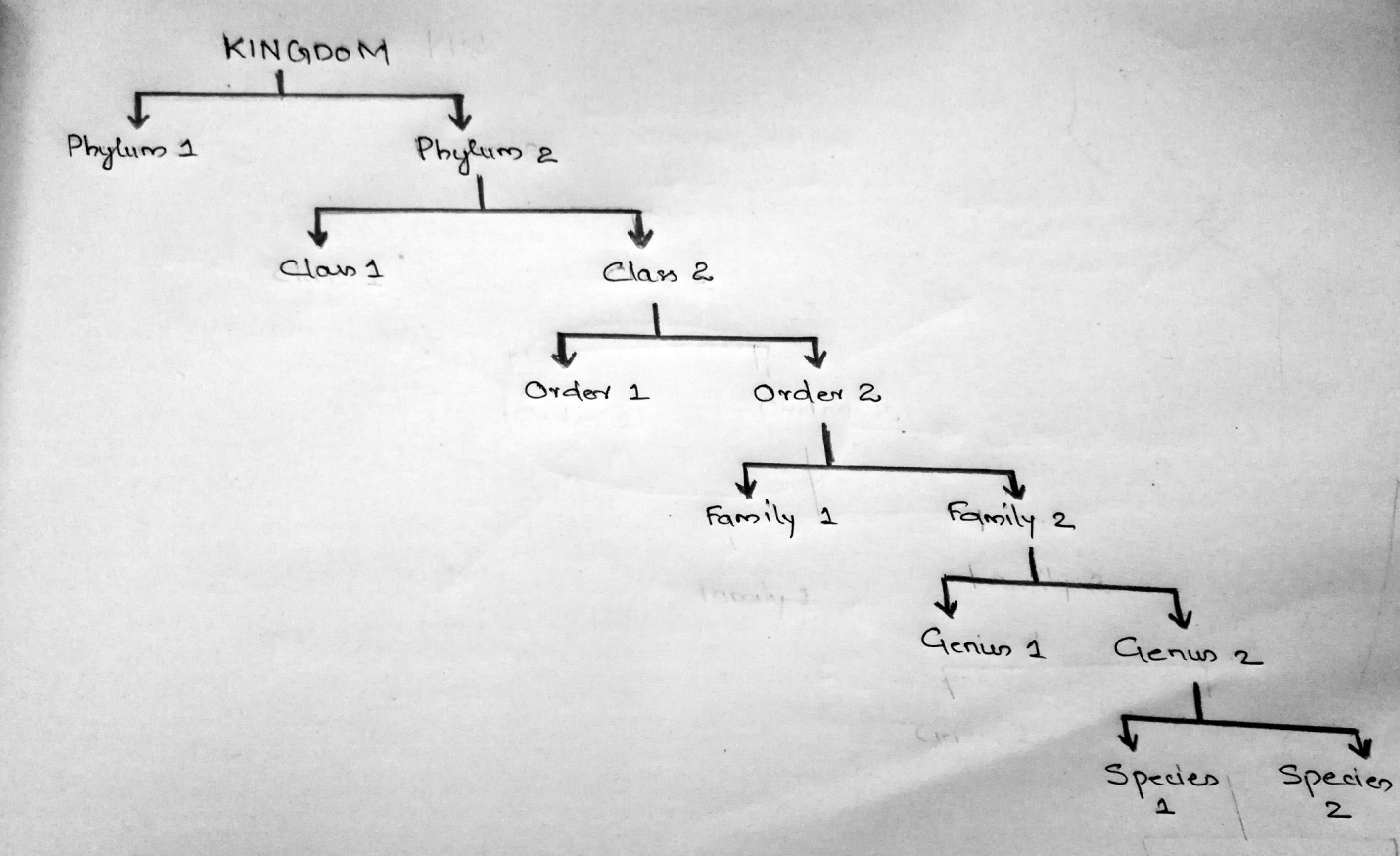For identifying and classifying organisms into different groups, a systematic procedure should be followed. The basic processes involved in taxonomy are as follows:
Characterization – Understanding of characters of organisms such as external and internal structure, structure of cell, development process, ecological information etc.
For example, all flowering plants are grouped together (Angiosperms).
All animals with mammary glands are grouped as mammals.
Identification – Correct description of the organism so that naming is possible.
All the characters should be accurately evaluated. Even a very fine mistake in any feature can result in mis-identification of the organism.
Classification – Grouping of organisms into convenient categories based on characters.
Each category is referred as ‘taxa’.
Taxonomic Category
In the process of classification, each organism is described correctly, and then classified into convenient categories by a step-by step process. This systematic arrangement of various taxa / category is known as Taxonomic Hierarchy.
Various steps of this classification hierarchy represent the level of organisational complexity of the organisms under each group. The highest category or taxon, i.e. the kingdom, contains the most complex organisms (least number of similarities). The lowest category, i.e. the species, contains the organisms with most number of similarities. After a very detailed Taxonomical study of all known organisms, scientists designated the different levels of taxonomic hierarchy (Taxon) as follows:
Kingdom
Phylum / Division
Class
Order
Family
Genus
Species
Taxonomic categories
SPECIES
Species is the lowest and basic category of a taxonomic hierarchy. As I had said earlier, this is the taxon having members with most number of similarities. In scientific terms, species is the smallest group of individuals that can interbreed.
For example, Panthera leo is the species name of lions. All male lions can mate with female lionesses. However, Panthera tigris (tiger) is another species. No lion mates with a tiger in nature. And all lions have more similarities in common, than when we compare a lion and a tiger. Hence, all lions come under a species, and tigers come under another species.
Distinct morphological difference is there between two closely related species
Panthera leo (lion) and Panthera tigris (tiger) have distinct morphological differences.
GENUS
Genus is the taxon that includes closely related species.
E.g: Genus Panthera
Panthera leo Panthera pardus (leopard) Panthera tigris
Animals which comes under genus Panthera shares several common features and they differ from the members of the genus Felis.
FAMILY
Family contains a group of related genera with less number of similarities. A family is grouped mostly on the basis of vegetative and reproductive features.
Family Solanaceae Family Felidae
Genus : Solanum Petunia Datura Panthera Felis
ORDER
Families with similar characters are grouped into an Order. They have very less similarities among their members.
In plants: Order Polymoniales In Animals: Order Carnivora
Family Convolvulaceae Family Solanaceae Family Felidae Family Canidae
CLASS
It includes all related orders having few similar characters.
Class Mammalia includes order Primata (monkey, gorilla, gibbon) & order Carnivora.
Class Dicotyledonae includes order Polymoniales & order Sapindales (mango)
PHYLUM/ DIVISION
It includes classes with very few similarities. Phylum is the term used for animals, and Division is the term used in the case of Plants.
Phylum Chordata includes classes Pises, Amphibia, Reptilia, Aves & Mammalia due to common feature – presence of notochord & dorsal hollow neural system
Division Angiospermae includes classes Dicotyledonae & Monocotyledonae.
KINGDOM
Kingdom is the highest category of taxonomy. It includes the members with least similarities.
All Animals are included in – Kingdom Animalia and all Plants are included in – Kingdom Plantae

